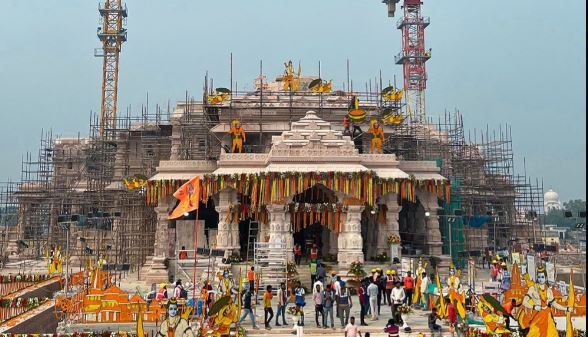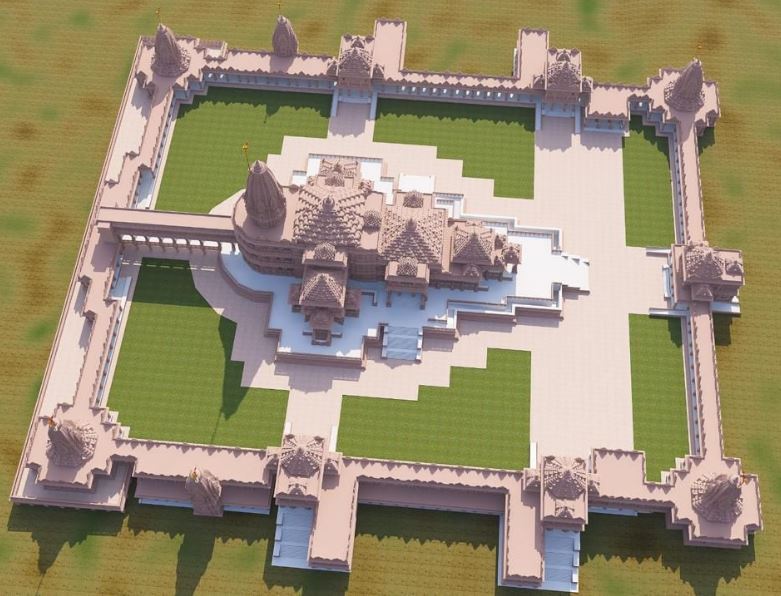7 Things You Didn’t Know About Ram Mandir in Ayodhya

Ram Mandir is made without iron or steel, using stone joints and copper dowels, making it earthquake-resistant and expected to last for a thousand years.
Rising majestically on the banks of the Sarayu River in Ayodhya, the Ram Mandir is not just a temple, but a cultural and spiritual beacon of India. It embodies the essence of faith, resilience, and architectural marvel, drawing millions of devotees and curious minds alike.
Steeped in legend, the Ram Mandir sits on the very ground believed to be the birthplace of Lord Rama, a central figure in the Hindu epic Ramayana.

The Ram Mandir signifies a deep spiritual significance for Hindus. It represents the triumph of good over evil, the unwavering devotion of millions, and the unwavering belief in the divine. Every brick used in its construction, lovingly inscribed with “Shri Ram,” carries the hopes and prayers of devotees from across India. Here are unique things you must know about the temple.
- Millennium of Strength: The temple is being constructed using a unique method inspired by ancient temple building techniques. No iron or steel is used, instead relying on stone joints meticulously interlocked using gravity and copper dowels. This makes the temple incredibly resistant to earthquakes and is expected to stand for a millennium.
- Echoes of Ramayana: The temple’s design incorporates elements referencing specific scenes from the Ramayana. For example, the three floors represent the three stages of Rama’s life – childhood, exile, and coronation. The Garbhagriha (sanctum sanctorum) will house a child form of Lord Rama, symbolizing his birthplace.
- Time Capsule for the Future: A time capsule containing 24 stone slabs etched with significant events related to Ram Janmabhoomi and the Ram Mandir construction will be buried under the foundation. This capsule is intended to offer historical context for future generations.
- Sacred Bricks with Devotion: Millions of specially inscribed bricks called “Ram Shilas” are being used in the construction. These bricks carry the inscription “Shri Ram” and were donated by devotees from across India, signifying their participation in this grand endeavour.
- Architectural Amalgamation: The temple design blends various architectural styles, primarily focusing on the North Indian Nagara style with influences from Chalukya and Chola styles. This amalgamation reflects the diverse cultural tapestry of India and its rich architectural heritage.
- Harmony with Nature: The temple complex will include a sprawling garden with plants and trees chosen based on astrological principles. This creates a harmonious environment that aligns with the tenets of Ayurveda and Indian spiritual traditions.
- Sustainability in its Construction: The construction process incorporates eco-friendly practices like rainwater harvesting and waste management. Additionally, locally sourced materials are being used to minimize the environmental impact and support the Ayodhya community.
These are just a few of the fascinating and lesser-known details about the Ram Mandir in Ayodhya. Its construction continues to be a significant event, not just for Hindu devotees but for India’s cultural and architectural landscape.
अयोध्या में निर्माणाधीन श्रीराम जन्मभूमि मंदिर की विशेषताएं:
— Shri Ram Janmbhoomi Teerth Kshetra (@ShriRamTeerth) January 4, 2024
1. मंदिर परम्परागत नागर शैली में बनाया जा रहा है।
2. मंदिर की लंबाई (पूर्व से पश्चिम) 380 फीट, चौड़ाई 250 फीट तथा ऊंचाई 161 फीट रहेगी।
3. मंदिर तीन मंजिला रहेगा। प्रत्येक मंजिल की ऊंचाई 20 फीट रहेगी। मंदिर में कुल… pic.twitter.com/BdKNdATqF6







